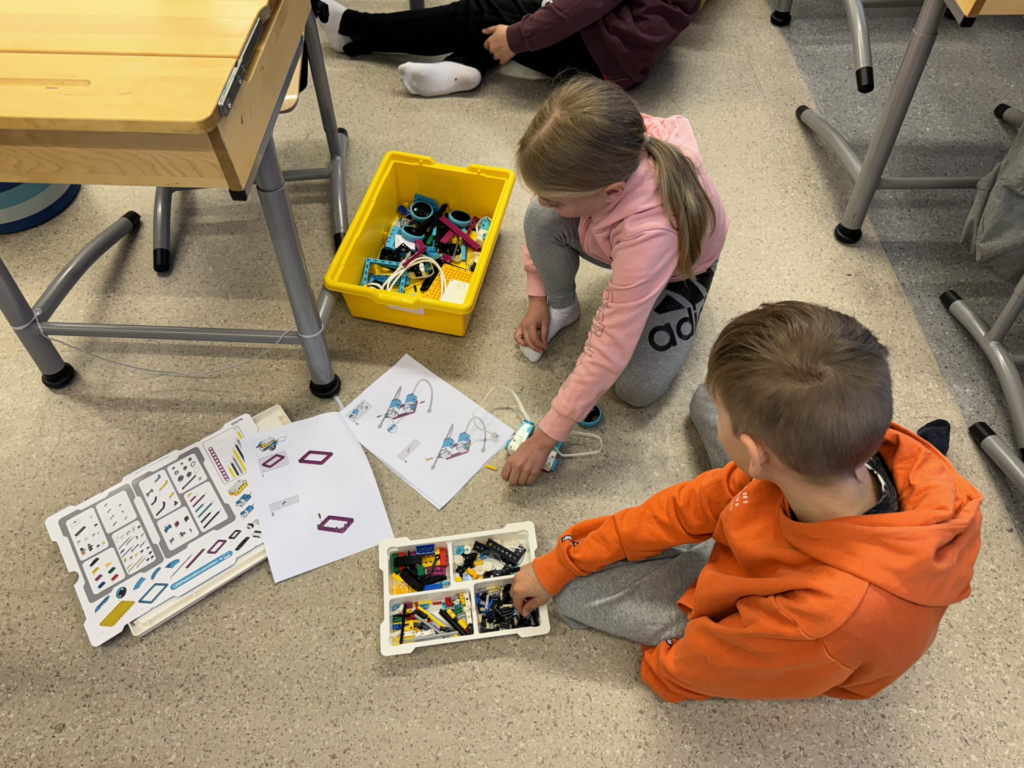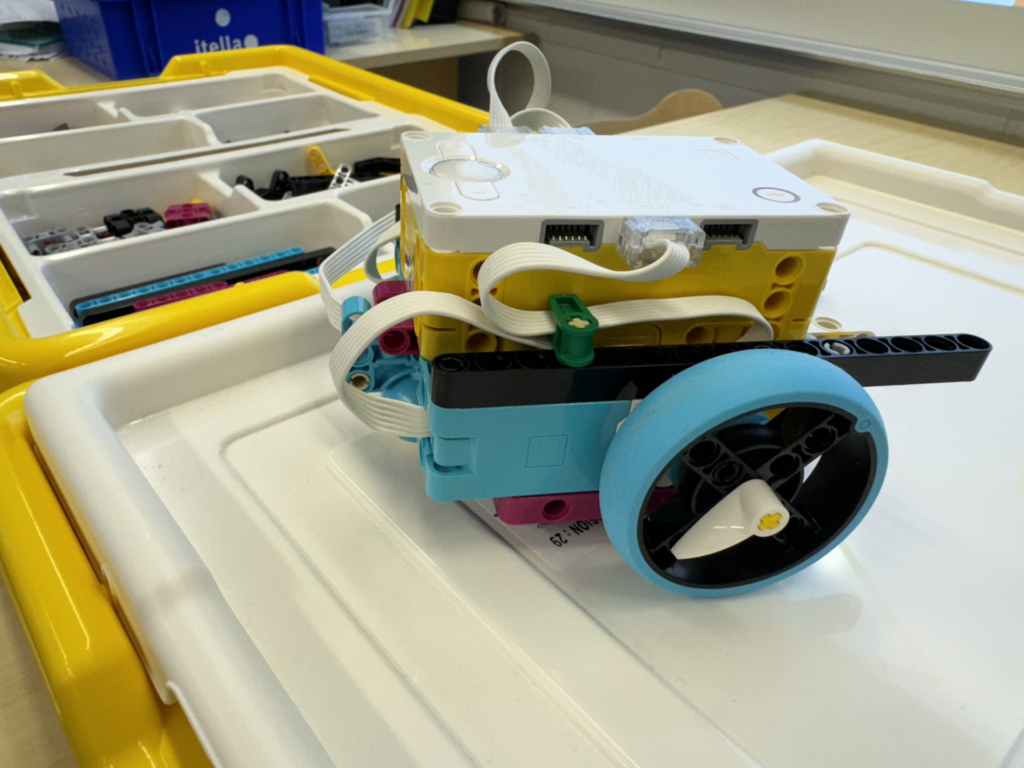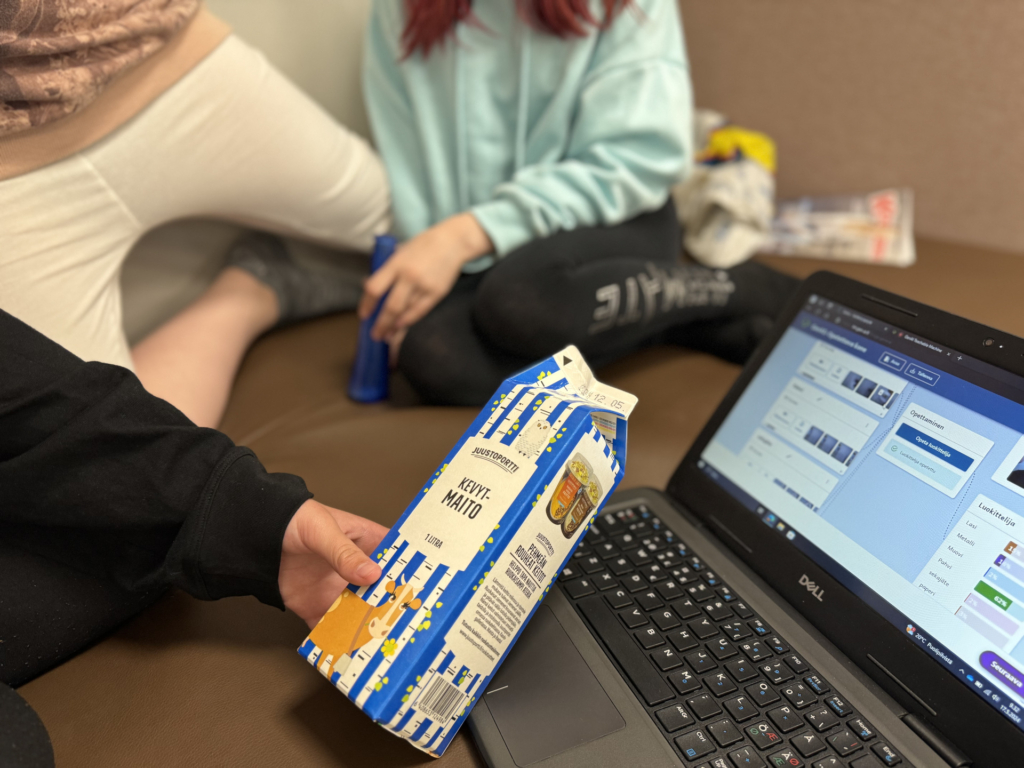
Article categories: Archive News
Robots and recycling: bringing energy education to schools through various workshops
Published: 4.6.2024
Updated: 28.8.2024
In May, students from Savilahti and Variska comprehensive schools got the chance to try out programming and train artificial intelligence.
Workshops are part of the Inspiring Energy at School project in basic education, aiming to integrate sustainable development themes into the entire basic education culture through an energy perspective.
Fourth graders at Savilahti comprehensive school were tasked with assembling a Lego Spike Prime robot and programming it to move. Building the Lego robots went well in pairs and small groups, after which the students programmed the robots to move using a separate application. Each group was able to successfully code the robot to move, and some of the groups managed to even add sound into their programming.
– The students started working on the task with open and inspired minds, and it was pleasant to notice how they were quick to bravely start exploring different options in their programming. If the robot didn’t go where it was supposed to, they tried again, tells classroom teacher Reetta Isotalus who led the workshop.
The goal is to introduce technological solutions for sustainable development and future planning through programming and robotics.

Learning about recycling with artificial intelligence
Fifth graders at Variska comprehensive school got to teach artificial intelligence how to sort waste. During this paired activity, students were figuring out how to categorise the different types of waste and how they can be sorted.
The task involved taking pictures of various waste items and teaching a programmable machine to recognise and sort waste based on the material. The waste sorting machines were created using a machine created within the GenAI project and designed specifically for basic education students.
When testing the waste sorting machines, it was found that with too little data, the AI could not recognise different materials. This task inspired students to think about the possibilities and reliability of teaching AI.
– The students have been very excited about the project. Utilising and teaching AI to students is important, and with this kind of task, we can also teach recycling in a new and interesting way, says class teacher Anna-Lena Ala-Seppälä.

The path of energy education from early childhood to higher education
Vaasa is the Nordic energy capital, and here, we implement an energy education pathway that extends from early childhood education to higher education.
In basic education, the energy theme is addressed from many perspectives.
– At different grade levels, we highlight content that is appropriate to the age group and subject goals. In grades 1–6, the energy topic is introduced through energy conservation, environmental protection, and food production. In grades 7–9, then again, the energy theme is explored more broadly, including energy production in the Vaasa area and, when possible, visiting companies, explains Maiju Rintala, a digipedagogy developer for basic education.
